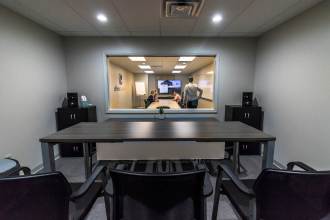Your Source for Quality Research Participants
Drive Research has decades of combined experience recruiting participants for various types of qualitative research such as focus groups, in-home usage tests, phone surveys, web interviews, and more. Take a look at our personalized recruitment process.

Sourcing
We source participants using various recruitment methods such as social media ads, vetted third-party partner panels, and our in-house panel.

Screening
We design an online survey of questions to pre-screen potential participants to manage quotas. Those who qualify receive a re-screening and confirmation call to answer additional questions.

Scheduling
Qualified participants receive a confirmation email asking them to reply back “yes” and a calendar invitation. Scheduled participants receive a confirmation call 24 to 48 hours before the qualitative market research study. Additionally, all confirmed participants are sent a reminder text on the day of the study as a final touchpoint.
Full-Service Qualitative Recruitment Capabilities

We quickly find and recruit participants
Drive Research places a focus on digital.
We recruit participants through email invitations to our nationwide panel,
highly targeted social media ads to new audiences, and partnering with third-party panels with competitive pricing.
Doing so creates a pool of recruits within just 24 to 48 hours of launching fieldwork. This gives us the flexibility to choose the best-qualified participants.

We focus on quality market research recruitment
In today’s qualitative world, so many are trying to automate the recruitment process and sign-up participants without running quality checks.
The problem? Participants know how to game the system and they are not re-screened before they meet the moderator.
Drive Research employs the opposite approach. When recruiting participants for market research, our team focuses on mini-touchpoints with each person through a series of contacts.

We provide near-perfect show-rates
We run our participants through a personal step-by-step process. This includes pre-screening participants online, re-screening them by phone to quality check responses, sending a confirmation email and calendar invitation, making reminder phone calls the night before the study, and sending reminder texts on the day of the qualitative research.
Our proven approach has led Drive Research to achieve an average show rate of 95%.

We adopt a single-recruiter approach
From start-to-finish participants have a single point of contact to answer any questions or concerns. Our fieldwork recruitment team builds mini-relationships with each participant.
The rigorousness we apply in our follow-up communication not only produces high turn-out rates for your project but also leads participants to have a higher level of comfort with the research process.
Types of Market Research We Recruit For
Qualitative recruiting is essential for several types of market research, where the focus is on gathering in-depth insights, opinions, and motivations from participants. Here are the just a few of the many types of market research we recruit for.

Focus Groups
Our recruitment process ensures diverse and representative participants, fostering insightful discussions in your in-person or online focus groups.

In-Depth Interviews
We recruit individuals who align with your target audience, providing detailed, nuanced insights in one-on-one interviews.

Phone Surveys
We recruit participants who precisely match your target audience, ensuring your phone surveys capture accurate and relevant feedback.

Product Testing
From in-store to in-home usage tests (IHUTs), we recruit participants who mirror your target market, ensuring actionable feedback for product optimization.
Contact Our Qualitative Recruiting Company
"*" indicates required fields








